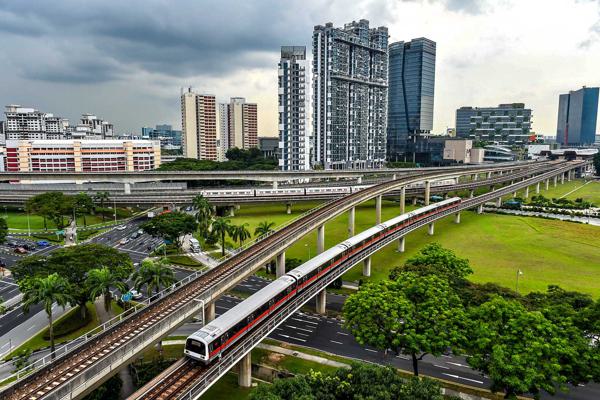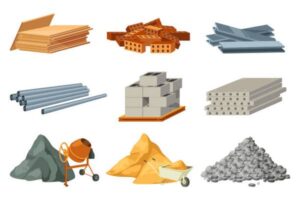How Do Building Material Tests Support Urban Infrastructure Development?
As cities grow vertically and horizontally, the reliability of urban infrastructure depends heavily on material performance1. From road surfaces to high-rise buildings, underground drainage to bridges and public transit systems, building material tests play a critical role in ensuring safety, durability, and sustainability2. Here’s how these tests contribute to the backbone of urban development.
Testing for Road and Pavement Construction Materials
Urban roads, highways, and walkways must withstand heavy traffic, weather extremes, and constant wear3. To ensure long-term performance4, materials like asphalt, concrete, and base layers5 are rigorously tested before and during construction.
Common Pavement Material Tests:
- Marshall Stability Test (ASTM D6927): Measures load-bearing capacity of asphalt.
- CBR (California Bearing Ratio) Test: Assesses subgrade strength.
- Skid Resistance Testing (ASTM E274): Ensures surface safety for vehicles.
- Moisture Susceptibility (AASHTO T283): Evaluates durability of asphalt in wet conditions.
| Prueba | Objetivo |
|---|---|
| Marshall Test | Determines strength and flow of asphalt mix |
| CBR Test | Helps design road thickness and layers |
| Skid Resistance | Improves road safety in wet conditions |
| Moisture Susceptibility | Prevents early cracking or stripping |
Proper testing ensures urban pavements are safe, smooth, and sustainable, reducing maintenance costs over time.

Seismic-Resistance Material Tests for Infrastructure Buildings
Urban buildings and transit systems in seismic zones must be engineered to withstand earthquakes. Material testing helps evaluate the elasticity, ductility, and energy dissipation capacity of structural components.
Seismic-Related Tests:
- Cyclic Load Testing: Simulates repeated seismic loads on joints and components.
- Ductility and Toughness Tests: For reinforced concrete and steel elements.
- Shake Table Tests: Full-scale models tested under simulated earthquakes.
- Fiber Reinforced Polymer (FRP) Performance Tests: For retrofitting applications.
| Material | Key Seismic Test | Resultado |
|---|---|---|
| Reinforced concrete | Cyclic flexural loading | Determines energy dissipation capability |
| Structural steel | Tensile and elongation tests | Ensures ductility under seismic stress |
| Masonry walls | Shear and compression testing | Assesses collapse risk and retrofit needs |
By incorporating seismic testing into the planning stage, cities build resilient structures that save lives during earthquakes.

Waterproofing Tests in Urban Drainage Systems
Urban drainage systems are critical for flood prevention, wastewater management, and public health6. Waterproofing materials used in these systems must be tested for performance under continuous moisture exposure and chemical load7.
Key Waterproofing Material Tests:
- Water Permeability (DIN 1048 / ASTM D5084): Measures seepage resistance of concrete or membranes.
- Tear Strength and Elongation: Evaluates durability of waterproofing sheets or liners.
- Hydrostatic Pressure Testing: Confirms resistance to groundwater pressure.
- Chemical Resistance Testing: Assesses performance in contact with industrial effluents.
| Material | Testing Focus | Urban Use Case |
|---|---|---|
| Waterproof concrete | Permeability and cracking | Sewer pipes, manholes, tunnel linings |
| HDPE membranes | Puncture resistance, chemical stability | Landfills, reservoirs, stormwater basins |
| Sealants and coatings | Adhesion, UV resistance | Roof decks, water tanks, basements |
These tests help cities develop robust drainage infrastructure capable of managing increasing rainfall and urban runoff challenges.

Quality Assurance Through Material Testing in Large-Scale Projects
Large-scale infrastructure like metros, flyovers, airports, and stadiums involve complex logistics and high safety stakes8. Testing ensures compliance with design specifications and regulatory standards9 at every phase.
Quality Assurance Testing Includes:
- Concrete Batch Testing (ASTM C31, C39): Verifies strength and mix consistency.
- Steel Mill Certificates + Field Retesting: Ensures material traceability and performance.
- Weld and Bolt Inspections (NDT methods): Detects flaws in structural joints.
- Thermal Insulation and Fire-Resistance Testing: For public buildings and transport hubs.
| Tipo de proyecto | Key QA Tests | Objetivo |
|---|---|---|
| Metro tunnels | Shotcrete compressive tests | Verifies lining integrity |
| Bridges and flyovers | Load cell and strain gauge tests | Confirms structural performance |
| Airports and stations | Fire rating of claddings | Ensures passenger safety and code compliance |
With proper QA through material testing, urban projects stay on schedule, within budget, and free of long-term liability.

Conclusión
In modern cities, material testing is more than a laboratory exercise—it’s a foundation for smart, safe, and resilient infrastructure. From roads and buildings to drainage and public transit, every element relies on proven materials that meet the rigorous demands of urban life. Through testing, cities not only build better—they build to last.
-
Understanding material performance is crucial for ensuring the reliability and safety of urban infrastructure, which is vital for city growth. ↩
-
Exploring this topic reveals how rigorous testing can enhance the longevity and safety of urban structures, benefiting communities. ↩
-
Understanding these effects can help in selecting the right materials for construction, ensuring durability and safety. ↩
-
This resource can offer strategies and best practices to enhance the durability of urban infrastructure. ↩
-
Exploring the benefits of these materials can provide insights into their performance and longevity in urban settings. ↩
-
Understanding these benefits can help you appreciate the importance of urban drainage systems in maintaining community safety and health. ↩
-
Exploring this topic will provide insights into the durability and effectiveness of waterproofing materials in urban drainage systems. ↩
-
Understanding these challenges can help in better planning and execution of infrastructure projects, ensuring safety and efficiency. ↩
-
Exploring this topic can provide insights into best practices for maintaining safety and quality in construction. ↩






